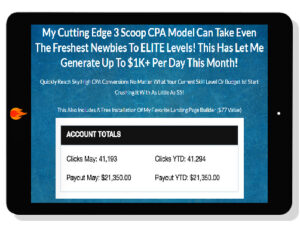Career Principles – The Complete Finance & Valuation Course
Master the fundamentals of finance, valuation, financial modeling, and much more.
This course will teach you the basics of financial accounting, finance, and how to perform the three main valuation methods: Discounted Cash Flow, Comparable Companies, and Precedent Transactions – all on Excel. Throughout the course, you’ll learn the theory, followed by practical exercises in the form of case studies to replicate the type of work you may encounter as an intern or full-time working professional.
Case studies range from forecasting a company’s financial statements, to creating full valuation models on real companies such as Apple or Adobe.
What You’ll Learn In The Complete Finance & Valuation Course?
Learn the core valuation methods
This course walks you through the fundamental valuation techniques used at the top Fortune 500 institutions across the globe. Ranging from the comparable companies and precedent transactions analysis to a full built-from-scratch discounted cash flow analysis, there are valuable lessons for everyone!
Learn using real-life finance scenarios
The valuation exercises in this course are applied to real, publicly-traded companies. This gives students tangible end products that replicate real finance deliverables used to make insightful and thoughtful investment decisions. Use this course to gain demonstrable modeling experience that can elevate any resume or CV.
Practical lessons applicable to real business & finance opportunities
This course is specifically tailored for current or aspiring professionals in business, finance, or investment oriented roles. This includes investment bankers, financial analysts, management consultants, or business analysts among others.
Course Curriculum
Module 1: Course Introduction
Course Introduction
Excel Computer Settings
Course Resource: Excel Shortcuts
Course Resource: Excel Formulas Glossary
Course Resource: Finance and Accounting Cheat Sheet
Course Resource: Finance and Valuation Glossary
Common Interview Questions in Finance
Module 2: Financial Accounting
The 3 Financial Statements
The Income Statement
Apple Income Statement Analysis
The Cash Flow Statement
Apple Cash Flow Statement Analysis
The Balance Sheet
Apple Balance Sheet Analysis
Building a Cash Flow Statement Steps
Case Study: Building a Cash Flow Statement from Scratch
Financial Accounting Quiz
Module 3: Financial Statement Analysis
Introduction to Financial Ratios
Profitability Ratios
Profitability Ratios Exercise
Liquidity Ratios
Liquidity Ratios Exercise
Activity Ratios
Activity Ratios Exercise
Leverage Ratios
Leverage Ratios Exercise
Finance Ratios Quiz
Case Study: Analyzing Company and Industry Ratios
Module 4: 3 Statement Model
Excel Financial Modeling Best Practices
3 Statement Model Introduction
Gathering the Relevant Data
Setting up the Income Statement
Filling in the Income Statement
Setting up the Balance Sheet
Filling in the Balance Sheet
Income Statement Forecast
Scenario Analysis
Scenario Analysis Assumptions
Income Statement Forecast Assumptions
Building a Dynamic Model
Balance Sheet Assumptions
Filling in the Balance Sheet
Fixed Assets Schedule
Debt Schedule
Retained Earnings Assumptions & Forecast
Cash Flow Statement
Final Edits & Summary
Module 5: Discounted Cash Flow Valuation
Discounted Cash Flow Introduction
Time Value of Money
Time Value of Money Quiz
Free Cash Flow
Enterprise Value & Equity Value
Enterprise Value and Equity Value Quiz
Weighted Average Cost of Capital (WACC) Pt 1
Weighted Average Cost of Capital (WACC) Pt 2
Optional: Advanced Beta Calculation Method
WACC Quiz
Discounting Cash Flows
Treasury Stock Method & Implied Share Price
Treasury Stock Method Quiz
Terminal Value & Sensitivity Analysis Pt 1
Sensitivity Analysis Pt 2
Optional: Goal Seek Analysis
Module 6: Complete DCF Valuation Exercise on Adobe
Adobe Discounted Cash Flow Introduction
Optional: Methods for Forecasting Revenue
Revenue Scenario Assumptions
Revenue Forecast
Cost Assumptions & Forecast
Fixed Assets Schedule
Calculating Unlevered Free Cash Flow
Cost of Debt (WACC Pt 1)
Cost of Equity (WACC Pt 2)
Implied Share Price (Growth Perpetuity Method)
Implied Share Price (Exit Multiple Method)
Sensitivity Analysis
Module 7: Comparable Companies Valuation
Comparable Companies Analysis
Comparable Companies Analysis Quiz
Gathering the Comparable Companies Financials
Calculating an Implied Share Price
Creating a Dynamic Comparable Companies Model
Module 8: Precedent Transactions Valuation
Precedent Transactions Analysis
Precedent Transactions Quiz
Precedent Transactions Exercise
Module 9: Stock Pitch & Football Field
Valuation Football Field
What is a Stock Pitch
Stock Pitch Presentation
Next Steps







